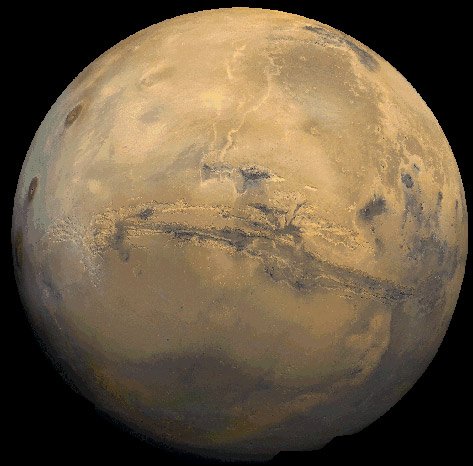During early 2004, four planets will be visible in the same section of the sky. Venus, Mars, Jupiter and Saturn will all be visible during the evening hours.
This alignment is easy to observe from the Northern Hemisphere; you only have to go outside any clear night in the early evening during March, April or May and look toward the west. Three bright objects are easily seen with the naked eye (they are Saturn, Jupiter and Venus). Mars is dimmer, but also visible.
Venus

Venus is the brightest planet and easy to observe with the naked eye. However it shows little detail when observed through a telescope.
Mars

Mars varies in brightness more than other planets. It can vary from bright red to pale pink over its two year cycle. Observation from earth based telescopes is worthwhile only near opposition (which occurs once every two years).
Jupiter

Jupiter is easy to observe with the naked eye. If you use binoculars you may be able to see some of the four brightest moons (which may be visible as small dots near the bright disk of Jupiter). With a small telescope, you can see bands in the atmosphere and up to four moons (sometimes one or more of the moons are behind the planet and not visible).
Saturn

Saturn is easy to observe with the naked eye. If you use a small telescope, you will able to see the rings (except every few years when the rings are “edge-on,” and thus not visible from our vantage point). Normally you can see the brightest moon, Titan, and possibly other moons.
More on the Planets
Photo Credits
- Venus—an Ultraviolet image as seen by the Pioneer Venus Orbiter; It was taken February 5, 1979.
- Mars—the Valles Marineris canyon system. Three volcanoes are visible on the left. This photograph is copyright 1997-1999 by Calvin J. Hamilton, all rights reserved.
- Jupiter—Voyager 1.
- Saturn—High Energy Astrophysics Science Archive Research
Center.